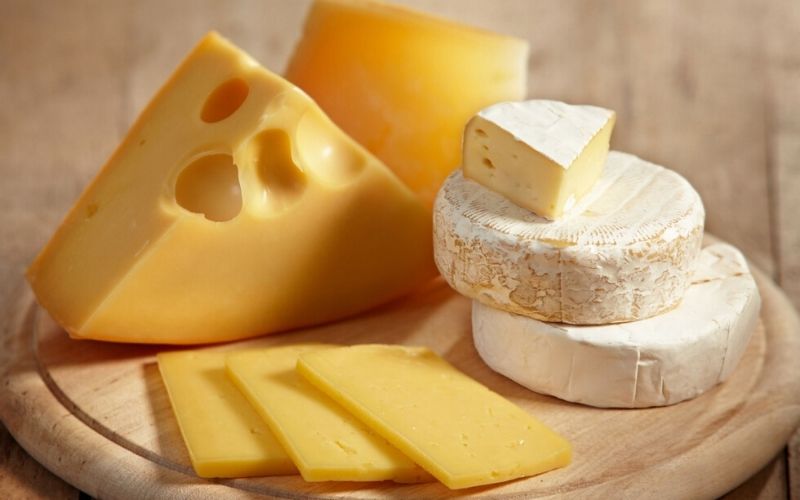Not just an ingredient that makes dishes more appealing and delicious, cheese is also considered one of the healthiest foods. Rich in calcium, vitamin D, and essential minerals, cheese promotes strong bone development and helps prevent osteoporosis in older adults.
In addition, cheese contains various beneficial microorganisms that, when consumed, can help fight off harmful bacteria in the body.
Learn more about the amazing benefits of cheese here:
To cater to different tastes and needs, two types of cheese are commonly found in the market: drinking cheese and eating cheese. Let’s explore their differences.
Related: How to Make Delicious and Soft Da Lat-style Cheese at Home

1 Differences Between Drinking Cheese and Eating Cheese
Discover more types of cheese here:
Form and Appearance:
As the name suggests, drinking cheese is in liquid form, slightly cloudy, and yellowish in color. On the other hand, eating cheese usually comes in blocks or thin slices, with a soft texture and either a yellow or white color, depending on the variety.
Eating cheese often comes in rectangular blocks or slices.
Ingredients and Composition:
Drinking cheese is primarily made from fresh milk, milk fat, minerals, and cheese culture, providing a good amount of vitamin D3, beneficial for gut health and bone development.
Eating cheese, on the other hand, contains up to 38% fresh cheese, along with other ingredients that contribute to its creamy texture and flavor, such as butter, skimmed milk powder, and natural food flavorings.
Main Uses:
While eating cheese is commonly used as an ingredient in dishes like sandwiches, hamburgers, pizza, and pastries, drinking cheese serves as a perfect snack or beverage, especially for those who cannot tolerate the richness of solid cheese.

Drinking cheese is an excellent alternative for those who find the texture or taste of solid cheese unpalatable. It provides the same nutrients and can be a great source of energy and rejuvenation after a long day.

2 Which Type of Cheese is Better for Children?
Both drinking and eating cheese offer the same nutritional benefits, so it’s a matter of personal preference and convenience. You can alternate between the two to add variety to your child’s diet.
A tip for parents: If you’re short on time or ideas for cheese-based snacks, drinking cheese is a convenient and portable option that requires no preparation.
We hope this information helps you understand the differences between drinking and eating cheese, enabling you to make informed choices for your little ones.
You can purchase a variety of cheese products from us:

































